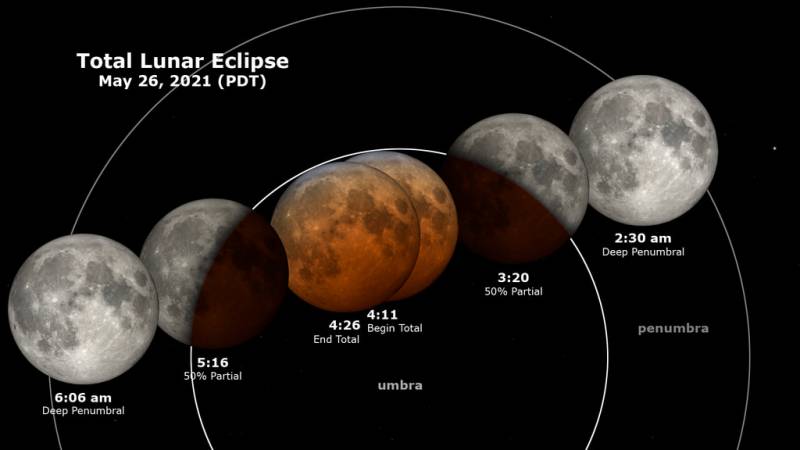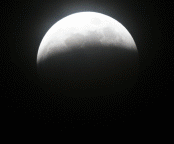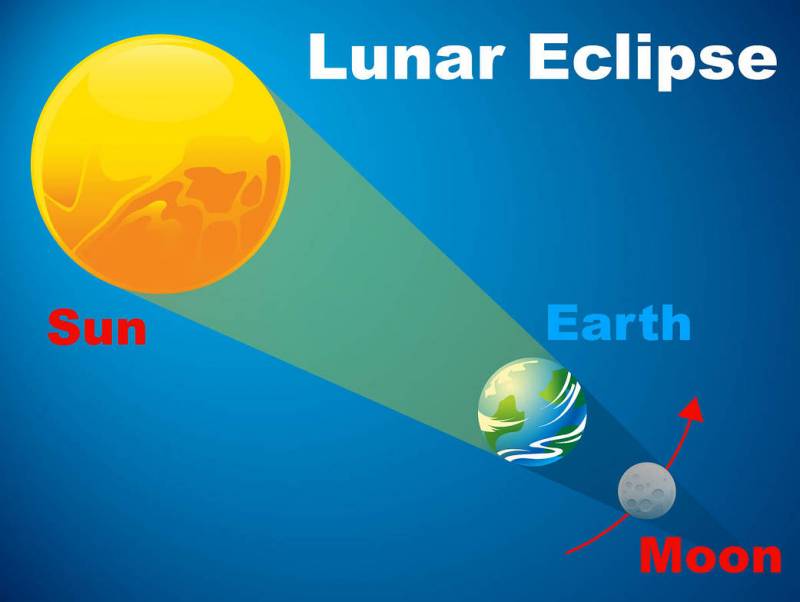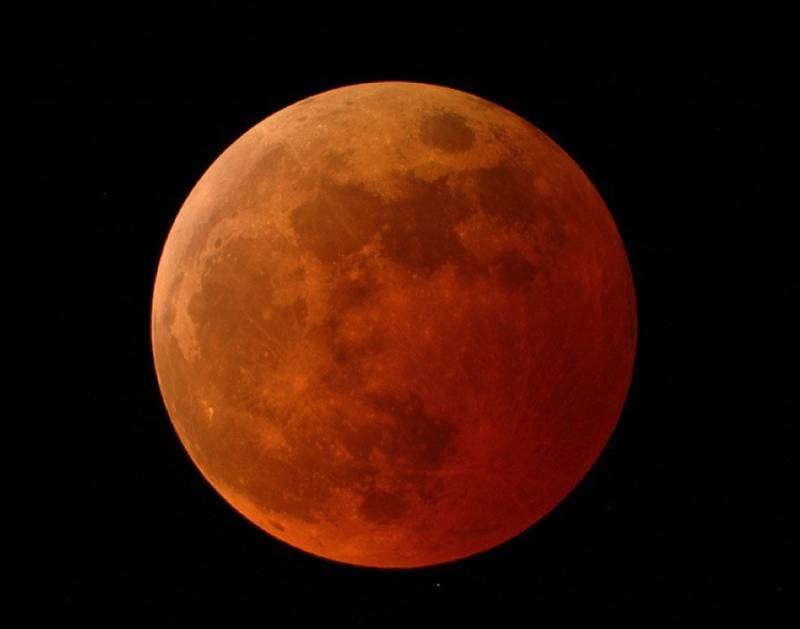If it feels like a good celestial event has been lacking in your life since last December’s Great Conjunction of Jupiter and Saturn, get ready for a treat. A total lunar eclipse is about to grace the night sky, and, weather permitting, you don’t have to travel far from home to enjoy it.
When and Where
The eclipse takes place on the morning of Wednesday, May 26, beginning at 1:47 a.m. PDT, when the moon makes first contact with Earth’s partial, penumbral shadow. At this time, the full moon will be in the south — you can’t miss it — positioned about 30 degrees above the horizon.
You may want to sleep through this part of the eclipse, setting your alarm for a bit later, because the penumbral phase offers only a minor dimming of the moon’s light, when you may notice little change.

The real show starts at 2:44 a.m. at the beginning of the eclipse’s partial phase, when the moon begins to enter the Earth’s full shadow, or umbra. Now you will begin to see a definite bite taken out of one edge of the moon.

If you’d like to view the eclipse from the comfort of your home, Chabot Space & Science Center will host a live virtual eclipse-viewing event through observatory telescopes.
Totality
The darkness will grow across the lunar disk until 4:11 a.m., when the eclipse enters “totality” and the moon is fully engulfed in Earth’s deep shadow. The entire face of the moon will dim and may take on a rosy coloration, from rusty brown to deep blood-red.
At totality, the moon will loom low in the sky, about 15 degrees high, so be sure to pick a viewing spot with a clear view of the southwestern horizon.
Totality is a breathtaking sight to behold. The once brilliant full moon transforms into a serene coppery sphere, strange and almost looking out of place. Depending on atmospheric conditions, it may even appear like a ball you can reach up and grab.

For this particular eclipse, totality won’t last long — less than 15 minutes. For some eclipses, totality can last an hour or longer, but Wednesday morning the moon will take a shortcut through the Earth’s umbra, and will be fully engulfed in Earth’s shadow from 4:11 to 4:25 a.m. After that, the moon will brighten again at one edge as it peeks back into the sun’s rays. The moon will depart the umbra completely at 5:52 a.m., only minutes before moonset.
Why Does the Moon Turn Red?
You might expect that the moon would go completely dark when it enters the Earth’s full umbral shadow. Instead, it seems as if the moon’s “night light” switch is flipped on, so that it becomes a ruddy, glowing fixture in the starry sky.

The answer to this puzzle is found in the Earth’s atmosphere. While the Earth itself blocks sunlight from shining directly into the umbral shadow, the atmosphere bends and scatters some of the light slipping around the edges, casting a glow into the shadow. Bluer tones of sunlight are filtered out by atmospheric gases, while redder shades can pass through more freely. The effect is similar to how a piece of red glass lets red light pass through while blocking other colors.
If you stood on the moon during this eclipse and looked back at the Earth, you would see the dark disk of the Earth blocking the sun, rimmed with brilliant reddish light, the glow of all the sunrises and sunsets happening on Earth at that moment.
When’s the Next Lunar Eclipse?
If you miss this one, there won’t be another total lunar eclipse visible from the Americas until almost a year from now, on May 16, 2022. So now’s your chance.